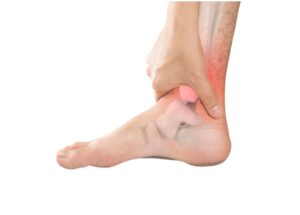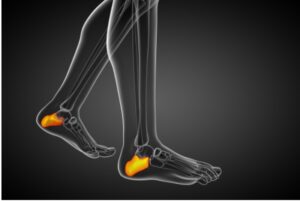Septic arthritis is a painful and potentially dangerous condition that occurs when infectious agents, such as bacteria or viruses, invade the joint space. This type of infection can lead to severe inflammation, joint damage, and disability if left untreated. It is important to be aware of the symptoms and risk factors associated with septic arthritis to seek prompt medical attention if there is any suspicion of it. With proper diagnosis and treatment, septic arthritis can usually be successfully managed before it causes long-term complications. This article will discuss the signs and symptoms, risk factors, diagnosis process, treatments available for septic arthritis, as well as complications that may arise from this condition.
Causes of Septic Arthritis
Septic arthritis, also known as infectious arthritis, is an inflammation of the joints caused by a bacterial, viral or fungal infection. This joint infection can be extremely painful and cause considerable damage to the joint if left untreated. It is important to recognize the causes of septic arthritis so that appropriate treatment can be administered promptly.
Bacterial Infections: The most common cause of septic arthritis is bacterial infection. Bacteria such as Staphylococcus aureus and Streptococcus pneumoniae are usually responsible for causing this type of joint inflammation. These bacteria commonly enter through cuts or puncture wounds that allow them access to the bloodstream, which then carries them directly into joints and other tissues. Unvaccinated individuals may also develop septic arthritis due to bacteria present in food or water sources that were contaminated with these organisms.
Viral Infections: Viral infections such as HIV, hepatitis B and C can lead to septic arthritis if they reach joints via broken skin or contact with infected bodily fluids (blood).
Symptoms of Septic Arthritis
Septic arthritis, also known as infectious arthritis, is a painful condition caused by an infection in the joint. It can affect one or more joints and is potentially life-threatening. Early diagnosis and treatment are important to reduce the risk of long-term joint damage or loss of function.
Symptoms of septic arthritis vary depending on the type of infection and how quickly it spreads throughout your body. However, some common signs and symptoms include:
- Severe pain that may be worse with movement
- Redness, warmth, and swelling around the affected joint
- Stiffness in the affected joint that may limit the range of motion
- A fever above 103°F (39°C) and chills • Fatigue or feeling unwell • Joints appearing deformed because of swelling
Diagnosis and Testing for Septic Arthritis
Septic arthritis is a serious joint infection that can cause significant pain, disability, and even death if left untreated. It is important to be aware of the signs and symptoms of septic arthritis, as well as the diagnostic tests used to confirm the diagnosis.
The most common symptom of septic arthritis is sudden, severe joint pain. The affected joint may also become swollen and hot to the touch. Other symptoms may include fever, chills, fatigue, nausea/vomiting and decreased range of motion in the affected area.
Diagnosing septic arthritis begins with a thorough physical examination by your doctor. During this exam, they will focus on assessing the severity of your joint pain along with any other associated symptoms you may be experiencing such as fever or chills. Your doctor may also order blood tests and take an X-ray or MRI scan to help diagnose your condition further.
If these initial tests do not provide clear evidence for septic arthritis then more detailed imaging studies such as an arthrogram or arthroscopy are usually required to make a definitive diagnosis. An arthrogram involves injecting contrast dye into the affected area which helps highlight any areas where there might be internal damage or infection present in your joints.
Treatment for Septic Arthritis
Septic arthritis is a rare but potentially serious condition that occurs when one or more of the body’s joints become infected with bacteria. It is most commonly caused by a bacterial infection, although other organisms such as fungi and viruses can also be responsible. Symptoms of septic arthritis include severe joint pain, swelling, tenderness, warmth to the touch, redness of the skin around the joint, and fever. If left untreated, septic arthritis can cause permanent damage to the affected joint and even lead to disability.
The main goal of treatment for septic arthritis is to eliminate the infection and restore function in the affected joint. Treatment typically involves a combination of antibiotics and surgical drainage (to remove any pus or fluid that has built up in the area). Antibiotics are usually given intravenously (through an IV) to reach all areas of infection quickly and effectively. In some cases, a doctor may also recommend anti-inflammatory medications such as ibuprofen or naproxen sodium to help reduce pain and inflammation associated with septic arthritis.
Surgical drainage may be necessary if antibiotics alone are not effective at eliminating all traces of infection from within the affected joint(s). During this procedure, which may require general anaesthesia depending on where it’
Prevention of Septic Arthritis
Septic arthritis is an infection of a joint that can cause severe pain, swelling, and stiffness. Although it is not as common as other types of joint infections, it can be serious if left untreated. Fortunately, there are ways to reduce the risk of developing septic arthritis and prevent its progression.
The first step in preventing septic arthritis is to maintain good hygiene. This means regularly washing your hands with soap and water and avoiding contact with people who may have recently been exposed to germs or bacteria that could lead to the infection.
Conclusion
Septic arthritis is a serious condition that can lead to severe joint damage, disability and even death if left untreated. Early diagnosis and treatment are essential to minimize the risk of complications and improve outcomes. Treatment typically includes antibiotics, surgery to drain the infection and joint replacement (if necessary). With prompt diagnosis and aggressive management, patients can often make a full recovery.






























